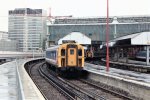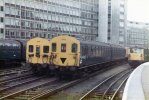I had 50007 to Waterloo from Exeter & then back just after lunch with D400 in 1992I photo'd 50007 leading D400 on a 1Zxx (time?) Waterloo to Exeter on 28-6-92, although can't see much of D400 as a 442 was keeping pace on the DSL!
Nope, guess again....
Also snapped a drag in early March 92, 6X55, 22//00 (9th) from Laira to St Leonards, 47361 hauling 027+031 in to the world of preservation.
Was window hanging enjoying the ride & some chub nicked my seat & moved my bags.
As he was twice the size of me I decided not to make too much of it, just staring at him when I felt like.
He bailed at Basingstoke so took the seat back for the journey to Exeter.
Great days though



